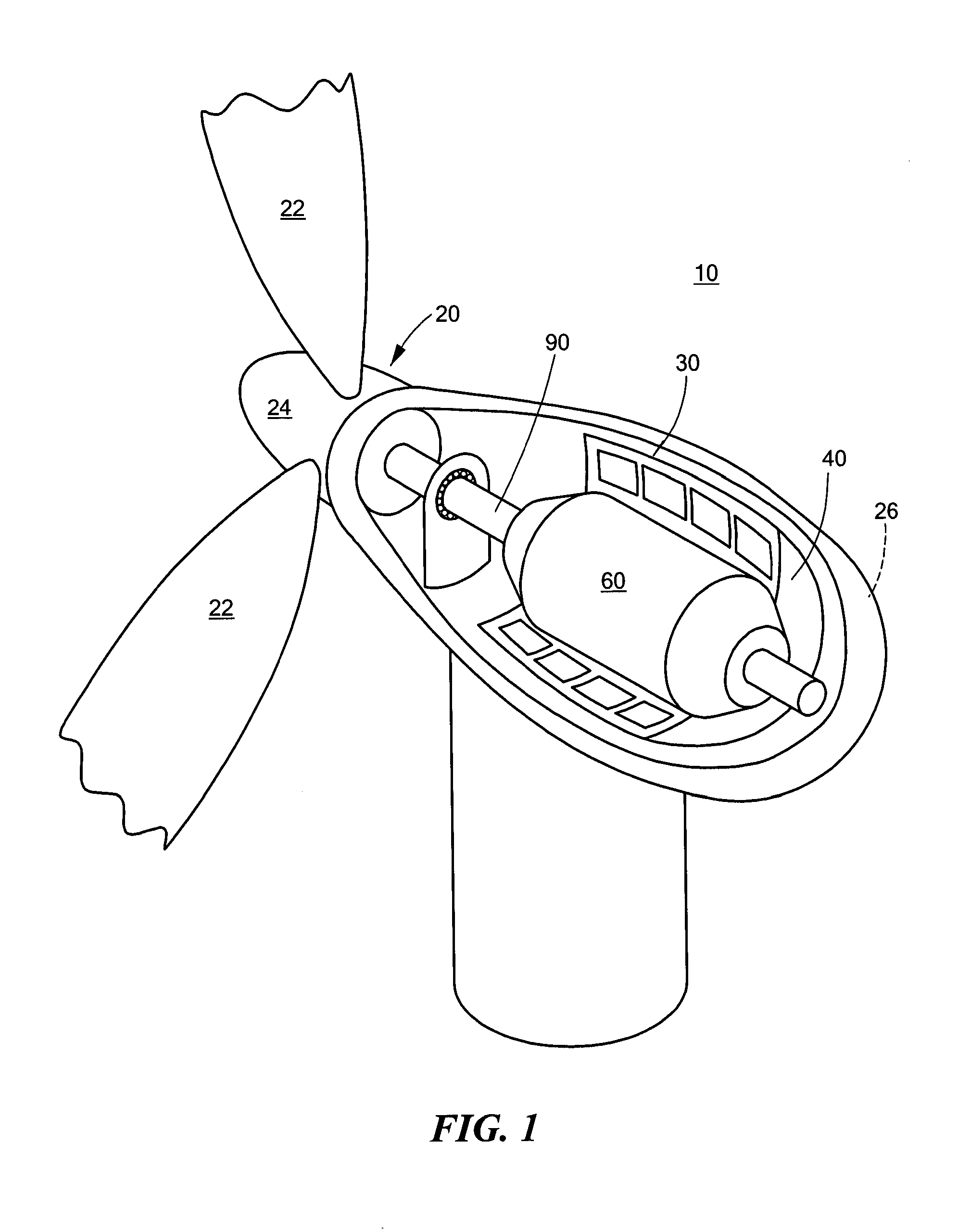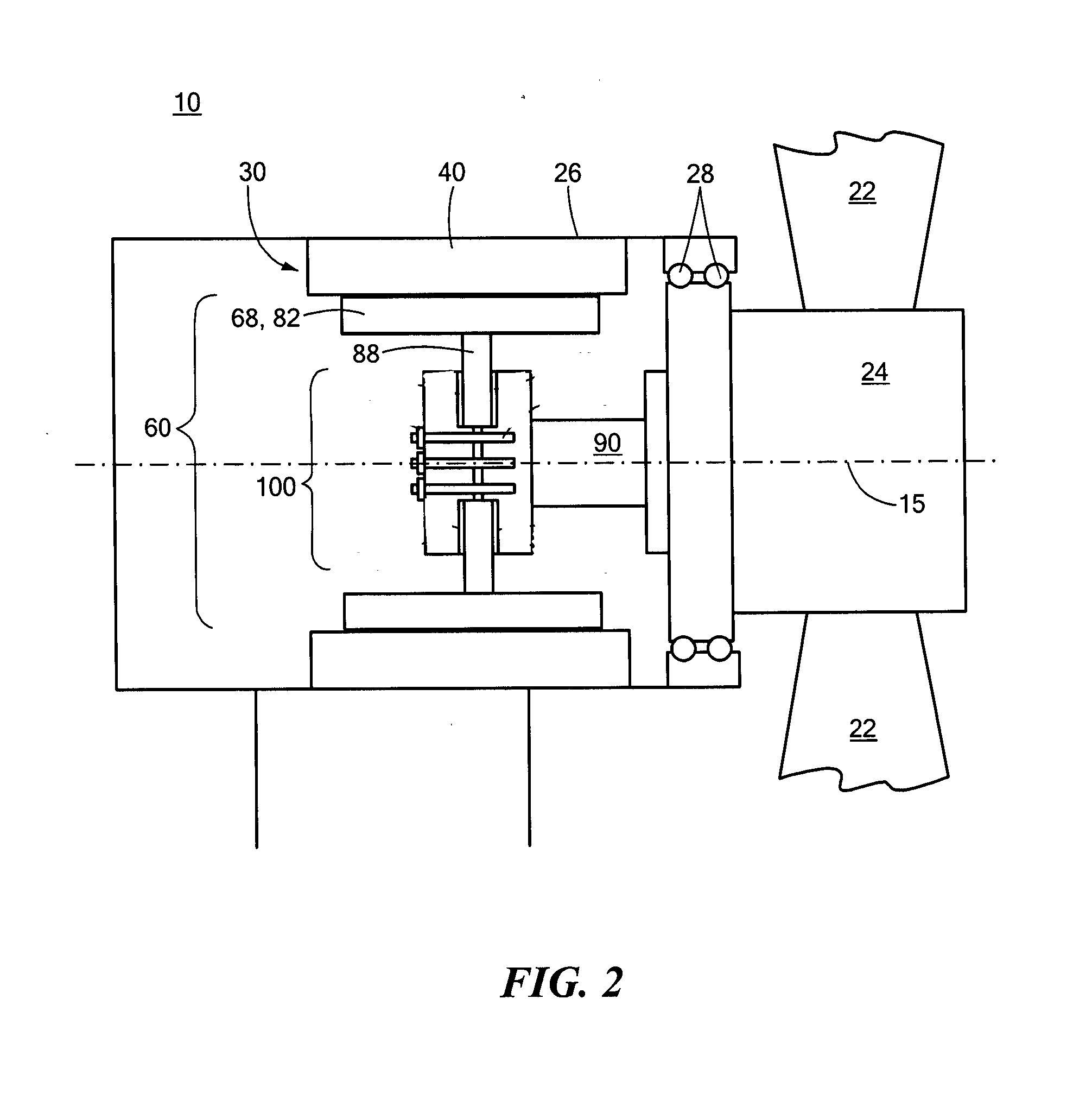Wide electrical conductor having high c-axis strength
- Summary
- Abstract
- Description
- Claims
- Application Information
AI Technical Summary
Benefits of technology
Problems solved by technology
Method used
Image
Examples
Embodiment Construction
[0026]Referring to FIG. 1, a wind turbine 10 includes a turbine rotor 20 having blades 22 connected to a hub 24. The wind turbine 10 also includes an electrical generator 30 which is driven by a drive shaft 90 that extends between the generator 30 and the hub 24. The generator 30 is housed in a nacelle 26, shown partially cut away with the turbine rotor 20 protruding through an opening in an end of the nacelle 26. As will be described in greater detail below, the generator 30 is configured for use in low frequency applications, and rotates at the same frequency as the turbine rotor 20. For example, in the illustrated embodiment, the generator 30 is configured to operate at around 11 rpm and generate 10 Megawatts of power or more.
[0027]Referring to FIG. 2, the generator 30 is a direct-drive, synchronous, rotating superconducting machine that includes a rotor assembly 60 containing an HTS field winding and a stator assembly 40 containing a non-superconducting stator winding, for examp...
PUM
 Login to View More
Login to View More Abstract
Description
Claims
Application Information
 Login to View More
Login to View More - R&D
- Intellectual Property
- Life Sciences
- Materials
- Tech Scout
- Unparalleled Data Quality
- Higher Quality Content
- 60% Fewer Hallucinations
Browse by: Latest US Patents, China's latest patents, Technical Efficacy Thesaurus, Application Domain, Technology Topic, Popular Technical Reports.
© 2025 PatSnap. All rights reserved.Legal|Privacy policy|Modern Slavery Act Transparency Statement|Sitemap|About US| Contact US: help@patsnap.com



